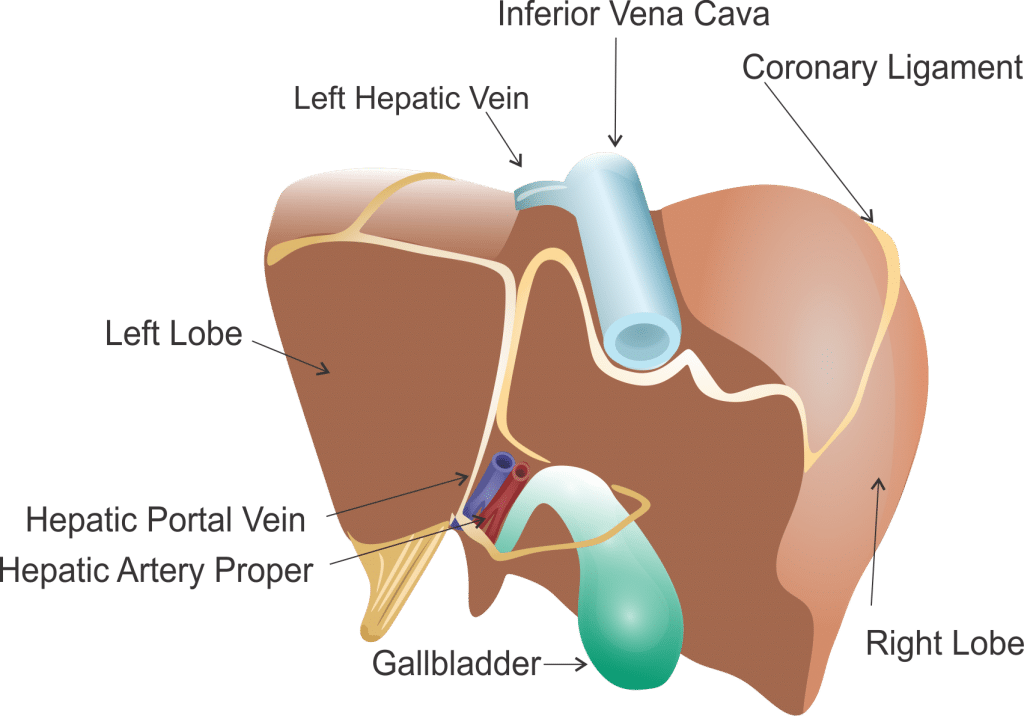Section 5: The Digestive System

The purpose of the digestive system is to disassemble the food we eat into molecules the body can use as energy. It also rids the body of waste. Digestion begins in the mouth and continues through the pharynx, to the esophagus, into the stomach, small intestine, and large intestine, and finally leaves the body through the anus. The liver, gallbladder, and pancreas also aid in the digestion process.
Digestion is the process of breaking down food. Both mechanical and chemical digestion begins in the mouth, where food breaks into molecules that can be absorbed. Mechanical digestion is where food is chewed, mixed, and churned. Chemical digestion begins in the mouth as saliva. It is the process of changing food on a molecular level through the action of enzymes or proteins that speed up chemical reactions in the body.
As food is chewed, it enters the body through the esophagus. The esophagus is a narrow, muscular tube that carries food from the throat to the stomach. Food travels through the body through waves of muscle contractions called peristalsis. It provides the force needed to move the food to the stomach. The stomach is found at the end of the esophagus. It has muscular walls that contract and relax and gastric juices that move the food around, breaking it into smaller pieces. The small intestine starts at the stomach and ends at the large intestine. Most chemical digestion takes place in the small intestine. Absorption of nutrients happens here too, and it is increased by villi or small projections that increase the surface area. The large intestine absorbs water from undigested chyme into the bloodstream. The remaining material is ready for elimination from the body.

The liver, gallbladder, and pancreas also aid in the digestion process. The liver has many essential functions in the body. Its main job is to filter blood from the digestive tract. It regulates the chemical levels in your blood and excretes bile, a substance that breaks up fat particles stored in the gallbladder. The pancreas produces enzymes that flow into the small intestine. It helps break down starches, proteins, and fats.
Review:
- Compare chemical digestion to mechanical digestion.
- Explain peristalsis.
- What is the function of the small intestine?
